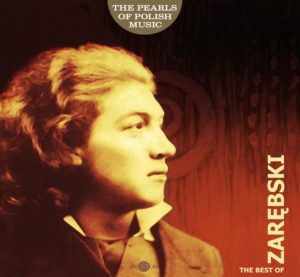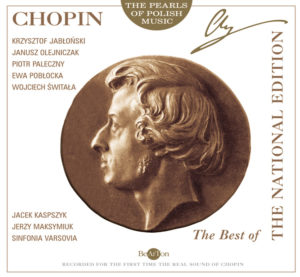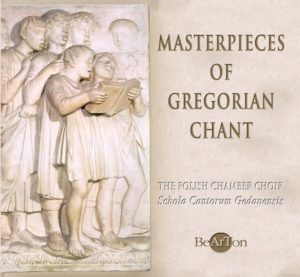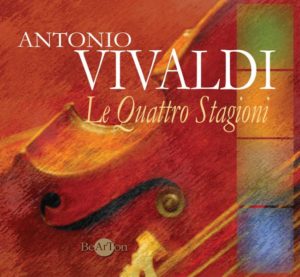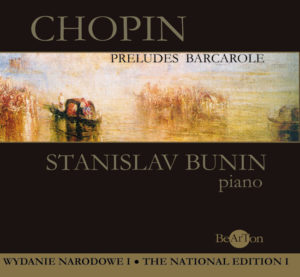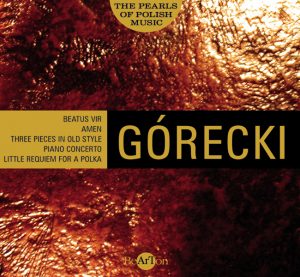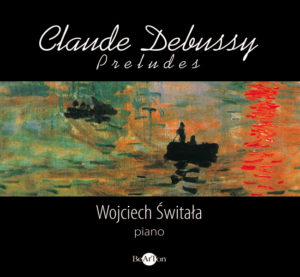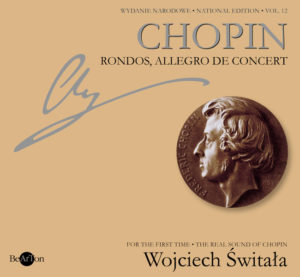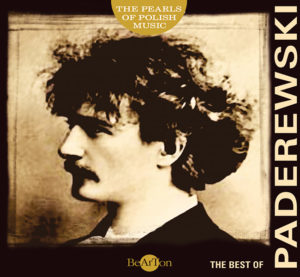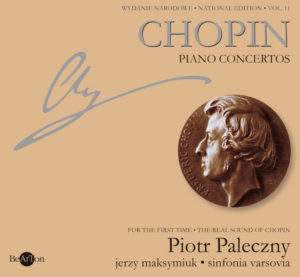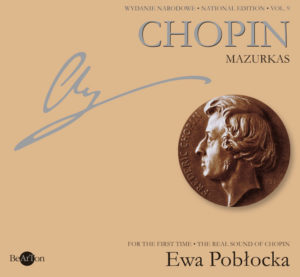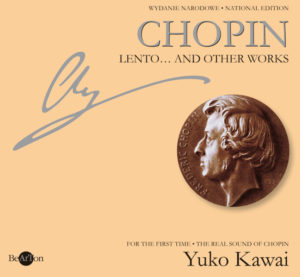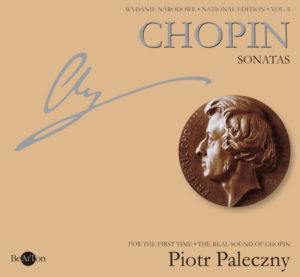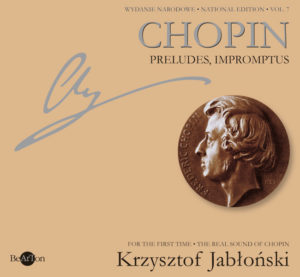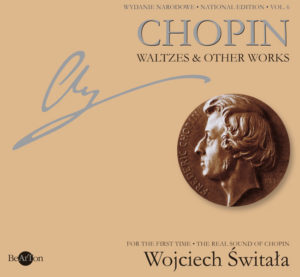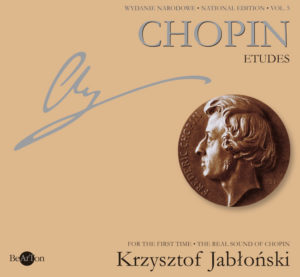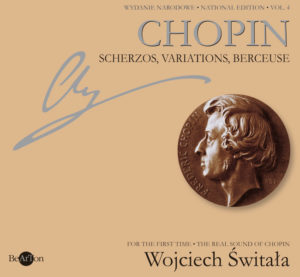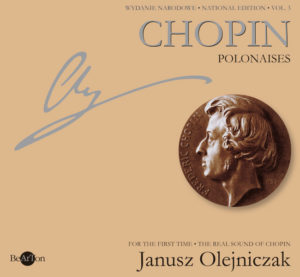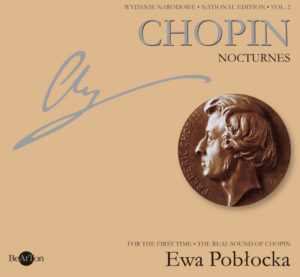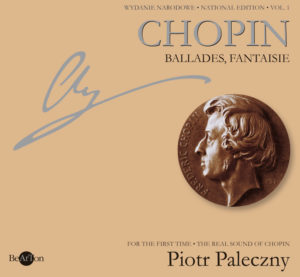Chopin – AUKSO
Chopin – AUKSO
Cat. No. CDB049
Music disc: SACD
Performers:
Janusz Olejniczak – piano
AUKSO – Chamber Orchestra of the City of Tychy
Marek Moś – conductor
Disc content:
- Fantasia on Polish Airs in A major Op. 13 – 14’44”
Piano concerto in F minor Op.21
- Allegro maestoso – 15’0″
- Larghetto – 9’44”
- Allegro vivace – 8’54”
Andante spianato & Grande polonaise in E flat major Op.22
- Andante spianato – 4’55”
- Polonaise in E flat major – 9’20”
Total time – 62’40”
Prizes:
Listen a part
51.99złAdd to basket
© ℗ 2010 Bearton
The Brillant Style and New Meanings
The pieces recorded in our album originate from the period of Chopin‘s youth and they refer to the conventions of the brillant style. That style dominating in the 1820’s and 1830’s was evoked by virtuoso pianists concentrating on technical perfection: brilliant, virtuoso and stunning show performances. Those aspects appeared for the first time in Chopin‘s solo piano works, and the style became a starting point for his concerting pieces and both Concertos.
Fantasia on Polish Airs in A major op. 13 was composed in 1828-29 and referred to the then popular genre of virtuoso arrangements of the well-known melody medleys plying on national feelings. Each of the three melodies that constitute the basis of the piece: a manor – house romance of Laura and Filon, a dumka assigned to K. Kurpiński and the Jedzie Jasio od Torunia, kujawiak, determine the familiar expressive nature, being so dear to the Polish ear. The thematic material was subjected to frequent paraphrases, variation processing, sophisticated figuration and ornamentation, although not in the tone of virtuoso brightness, but rather of tender gentleness. Dolce (used 28 times) dominates over brillante here, delicatissimo, cantabile, and semplice over con anima and agitato.

Janusz Olejniczak
We should pay special attention to the large introduction (Largo non troppo) in the Fantasia, being attractive for a characteristic Chopin-like idiom that was revealed right there to a larger extent than in any previous works. New poetics resulted from a non-trivial use of harmonics and rich ornaments that created stunning shapes and designs. The figures assumed from the brillant style were multiplied and diversified by Chopin to a previously unknown degree, giving to them unique subtlety and delicacy. Each subsequent bar had a different and separate rhythmic structure, while lyrical melodies, with a wide breath, were interwoven with ornaments into one inspired course of musical narration. The author of that delightful introduction definitely exceeded beyond the conventions of the assumed style. The role of the orchestra in the Fantasia was reduced to accompaniment, creating a quasi-oniric or possibly fabulous background for the concerting soloist, and if the wood and the horns assume sometimes the motifs of the themes, they do so only not to be lost in ingenuous piano figurations.
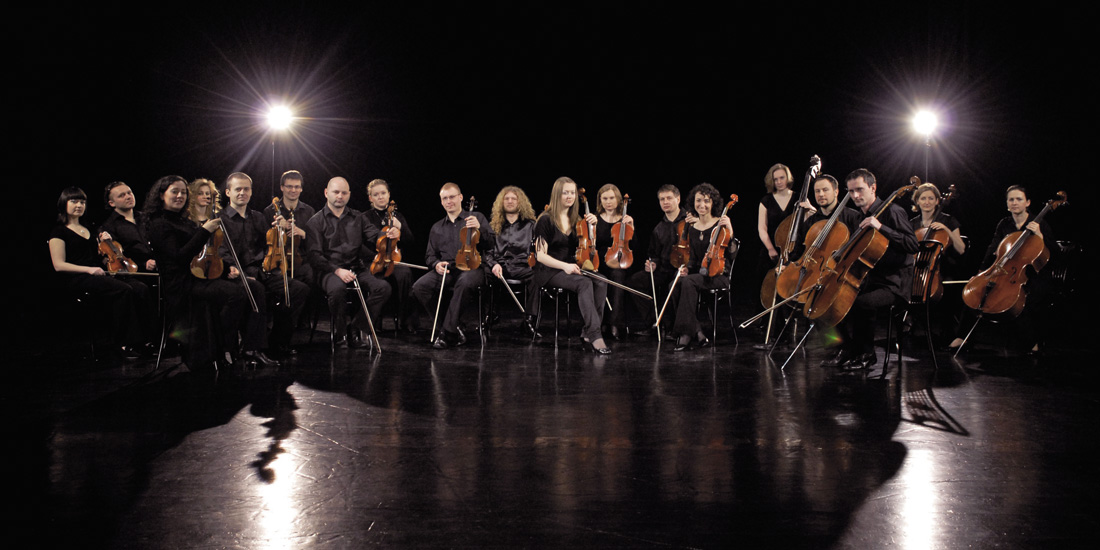
AUKSO
Piano Concerto in F Minor op. 2 was composed in 1829-1830. Chopin‘s biographers unanimously explained the circumstances of the piece’s origin. In fact, those circumstances were revealed by the composer himself in his letter to Tytus Wojciechowski: …Because I may possibly be unlucky to have my ideal which I have been worshipping faithfully, without conversing with her, for six months, dreaming of her as well, to commemorate my ideal, I composed an Adagio to my Concerto… And that ideal was Chopin‘s peer, beautiful Konstancja Gładkowska. The young artist’s enchantment was overwhelming, which was obvious for any romantic, and it lasted long after Chopin left Warsaw. The lady, however, did not treat seriously her admirer, since she burnt all the letters sent to her. Let me add that the first of Chopin’s muses was replaced by another famous addressee of the dedication, Delfina Potocka, upon publication of the Concerto in F Minor (1836).
The construction and the nature of the Concerto comply with the brillant style conventions. The first part has the form of a sonata allegro, with a double exposition, while the second one the form of a song, with the third one being a rondo. Essentially, the Allegro is saturated with a large dose of lyricism, especially in the second theme, containing an unusual Chopin-style cantilena, oscillating between a dynamic march and the moments of day-dreaming, or between con anima and sostenuto.
The second part, Larghetto, assumes the form of a nocturne and occupies a central place in the Concerto’s dramaturgy, justifying the sense of its message. From the first A Flat Major accord, which sounds as an opening of a gate to a shrine of love and peace, Chopin tells the piano what he would have otherwise to say to a person. The author of that statement, Jarosław Iwaszkiewicz, made the point. In fact, together with the piano opening, we enter a different time that seems to have stopped, as well as a different world: hardly real and apparently oniric world of a slow-motion movies… According to the poetics of the nocturne, the mood is created to be destroyed, and that is why there is a sudden shift to the middle part where, on the background of the string tremolando, both hands, arranged in the octave unison, conduct a recitative swaying with outrage… The Larghetto raised enchantment since the first performance. Wherever I go, said Chopin they recall my Adagio only. Maurycy Mochnacki praises it to the skies. In 1949, Z. Jachimecki included that part of the Concerto among the most beautiful chapters of the erotic poetry of the 19th century, and T. A. Zieliński doubted in 1993 whether one could find in the musical literature an equally suggestive, passionate and moving love confession contained in sounds.
The final rondo brings a radical contrast in respect of the two preceding parts, exposing music which is full of life, serenity and humour, the music which is turned into a dance in a folk style. In fact, that is a concerting stylisation of the mazur, although the first phrases of the theme remind us rather of the kujawiak. The role of the orchestra is adjusted in the Concerto to the assumed brillant style convention and the nature of Chopin‘s piano music, which treats the orchestra mostly as a setting for the concerting piano, stressing the emotional sense of a selected phrase or figure. Nevertheless, the score contains many enchanting places (e. g. the expositions of Part I, Introduction to and conclusion of the Larghetto, mazur motifs of the wood in turns with the con legno violin, or the famous horn solo), while a sensitive conductor can evoke the charm of discrete counterpoints of the wood, the strings and the horns.
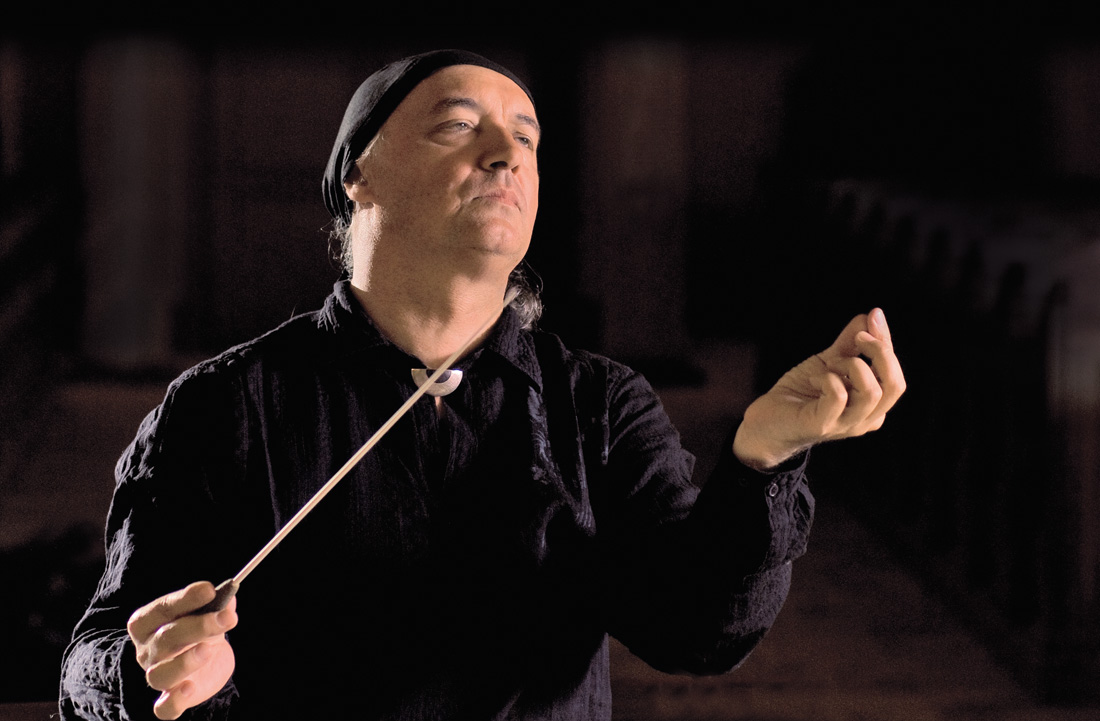
Marek Moś
Andante spianato & Grande polonaise brillante in E flat major op. 22, although completed after the composer had left his homeland, represented, as the last Chopin‘s composition in the brillante style with an orchestra, the aesthetics that is proper to the Warsaw period, revealing Chopin’s own personal stylistic and expressive profile that is distinguished even on the background of all other composer’s works. Although in the main polonaise part the piece offers a demonstration of the brillant style, in the form that is the most characteristic for that style, it is actually brilliant, full of bravado and brightness, as a dazzling showpiece. The richness and splendour of sound designs and the lightness of virtuoso figures bring the feeling of serenity, together with the tone of soft lyricism. Still, in the very theme, which is close to the native tradition of the polonaise, we can hear heroic accents which a moment later dissolve in the decorative figurations and fioritures. The piece was composed in several stages. The idea was conceived in Warsaw in 1830. The work was completed probably in Vienna in the subsequent year. Later, in Paris, possibly in connection with the concert (on 26 April 1835) when Chopin played the polonaise with an orchestra, Andante spianato was composed with the intention to be played by the solo piano, as an integral introduction to the piece. The introduction expressed new romantic contents in a special way. Chopin resorted to, not the first time and not the last time, the condition of drowsy monotony, a half-sleep mood and contemplation, building a subtle and sophisticated expressive character. The very polonaise was structured after an expanded rondo (ABACABA + coda), although one can also notice a reprise form in it.
The works recorded in our album are significant and important compositions of Chopin’s juvenile heritage. As the top achievements of the brillant style, they were conceived to express also new romantic contents determined by expression of feelings.
Marek Wieroński
Reviews
BeArTon have been charged with recording the new Polish National Edition of Chopin’s works. The compilation of a new critical edition has itself been a long-term and complex operation; Chopin entrusted his publications to many publishers in France, Germany and England, and since then many other printers have made their own editions. A major complicating factor has been Chopin’s habit of often having several perfectly valid autographs but each with markedly different versions.Series A of the National Edition included authoritative new versions of scores which Chopin himself prepared for publication, each being recorded on RBCD as the volumes were completed. Series B contained the unpublished juvenilia and posthumous works, which were issued as hybrid SACDs. The present disc is the first part of a new series of SACD recordings using some of the Series A scores, presumably as part of Poland’s “Chopin Year 2010”. It offers three of Chopin’s early works with orchestra, spanning a few years either side of 1830. […]
BeArTon’s booklet notes are, as usual, very informative and generally well translated into English, if sometimes rather obliquely. I have, however, noted that the tone of the information is sometimes unusually technical and rather abstruse. There are phrases like “New poetics resulted from a non-trivial use of harmonics and rich ornaments” and “creating a quasi-oniric or possibly fabulous background” (which had me scurrying for the dictionary). To my mind this heavy style is rather off-putting to the general music lover, although I do appreciate that the documentation of performances from the National Edition scores should have some scholarly element.
This is a disc obviously made with love by performers who have Chopin’s music in their veins. It is most atmospherically recorded, giving the illusion of being present at the performances. I have no doubt it will be one of my discs of 2010. Chopin-lovers should not miss this one!
BeArTon’s on-going series of recordings of the complete works of Chopin in a new National Edition goes from strength to strength, and this latest issue proves to be outstanding in almost all respects.In his solo recordings of Chopin’s Waltzes, Polonaises and Mazurkas, Janusz Olejniczak has already shown himself to be a stylish and sensitive performer of this composer, with playing that is completely free from exaggeration and any of the mannerisms of say a Lang Lang that can become tiresome on repeated listening. Olejniczak puts his considerable pianistic powers totally at the service of the composer and consequently achieves most satisfying results. On this SACD the splendid and characterful AUKSO Chamber Orchestra of Tychy under Marek Mós accompanies him, and Chopin’s often much maligned orchestration emerges with a freshness absent from many recordings using larger forces. Nowhere is there a trace of routine in the playing thanks to Mós’s meticulous direction of his musicians. […]
The HD PCM 5.0 recording, made in the Music Academy Concert Hall in Katowice, is generally both clean and easy on the ear, while the ambience, of what sounds to be a rather capacious venue, has added a lovely bloom to the sound of Olejniczak’s piano. There is, however, a slight tendency for the orchestral sound to harden and lose definition in some of the louder passages.
Though there are many alternative recordings of these pieces in the CD catalogue and, in the case of the concerto, even on SACD, these idiomatic and eminently satisfying performances can be unhesitatingly recommended to all lovers of Chopin.

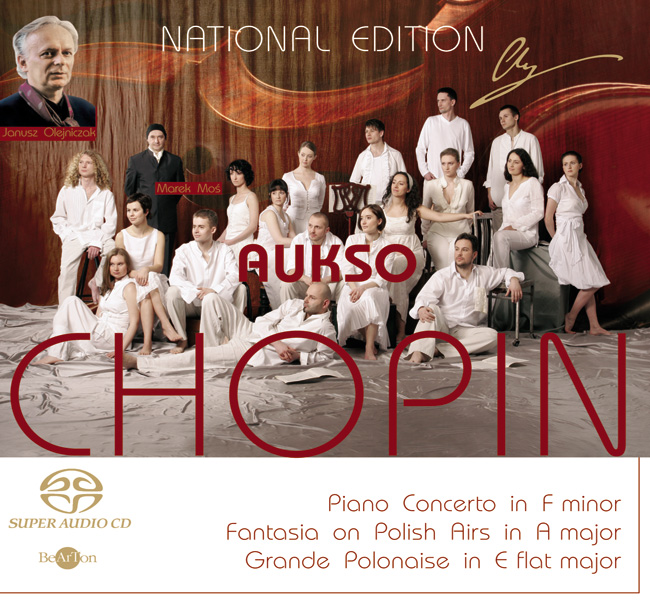






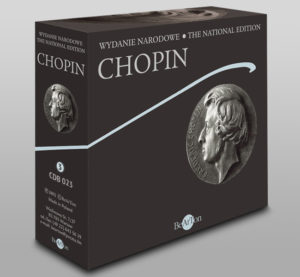
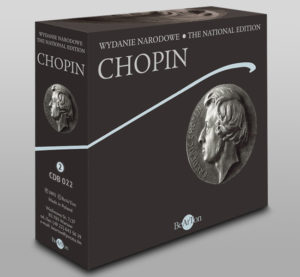
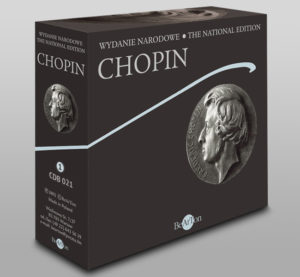
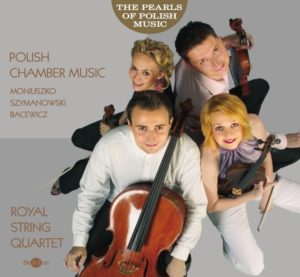
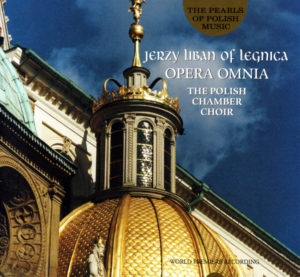
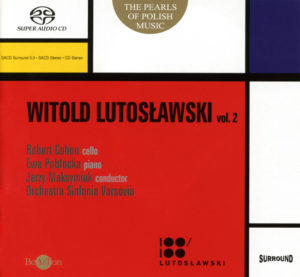
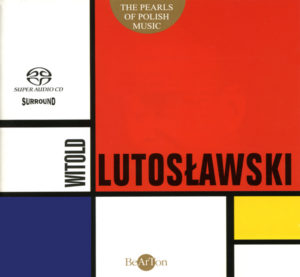
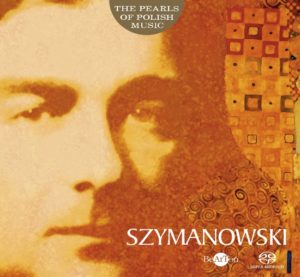
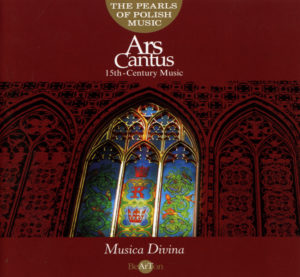
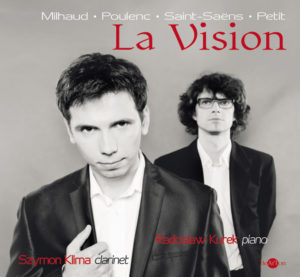
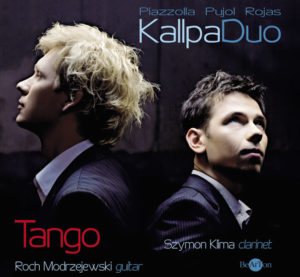
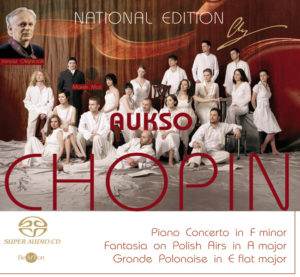
![Chopin – Walce [B] i inne utwory CDB047](https://www.bearton.pl/wp-content/uploads/Chopin-Walce-B-i-inne-utwory-CDB047-A-300x277.jpg)
![Chopin – Pieśni [B] CDB046](https://www.bearton.pl/wp-content/uploads/Chopin-Piesni-CDB046-A-300x277.jpg)
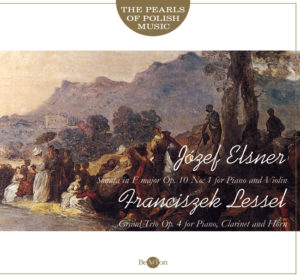

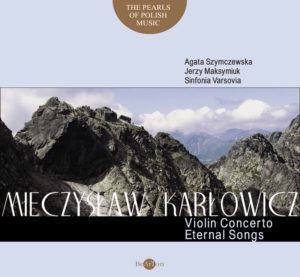
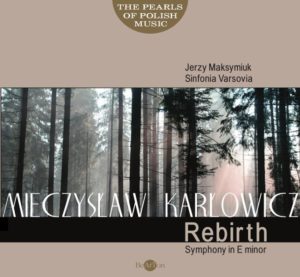
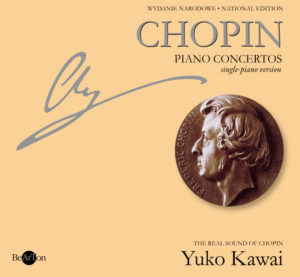
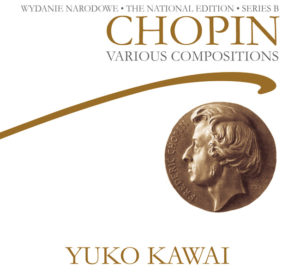
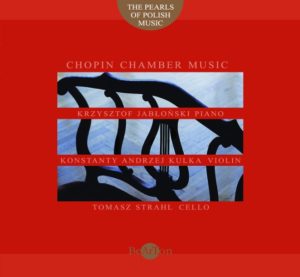
![Chopin - Mazurki i inne utwory [B] CDB038](https://www.bearton.pl/wp-content/uploads/Chopin-Mazurki-i-inne-utwory-B-CDB038-A-300x277.jpg)
![Chopin – Polonezy [B] CDB037](https://www.bearton.pl/wp-content/uploads/Chopin-Polonezy-B-CDB037-A-300x277.jpg)
